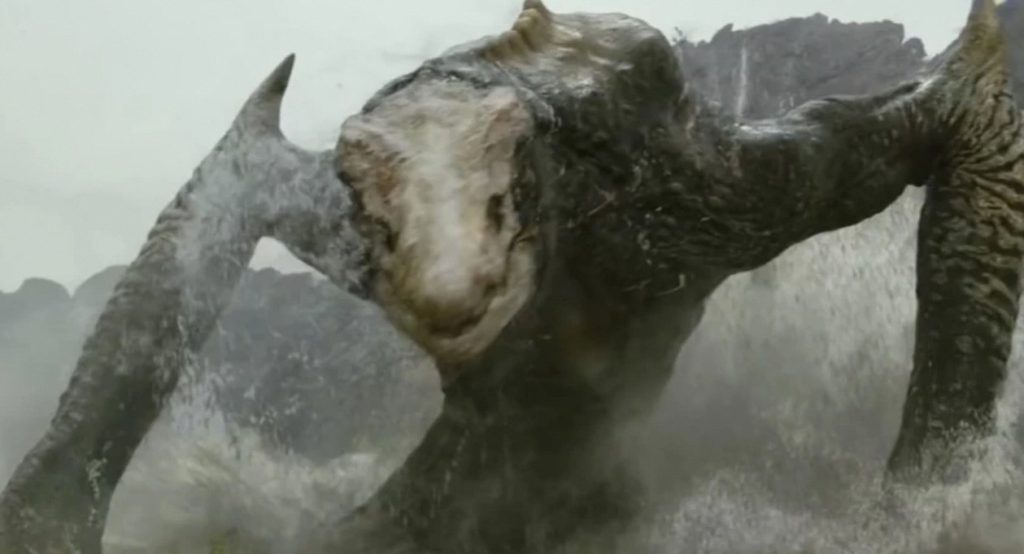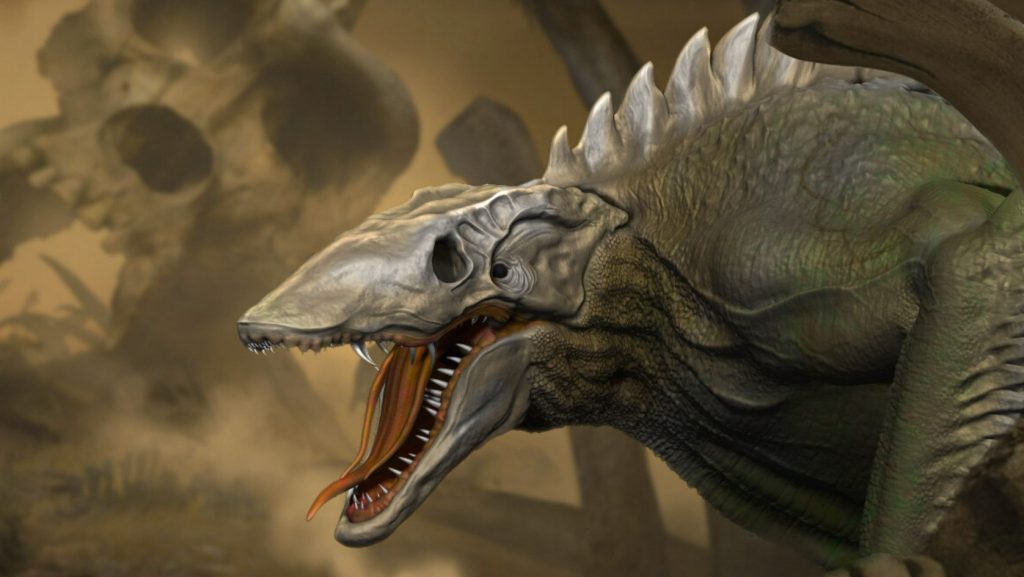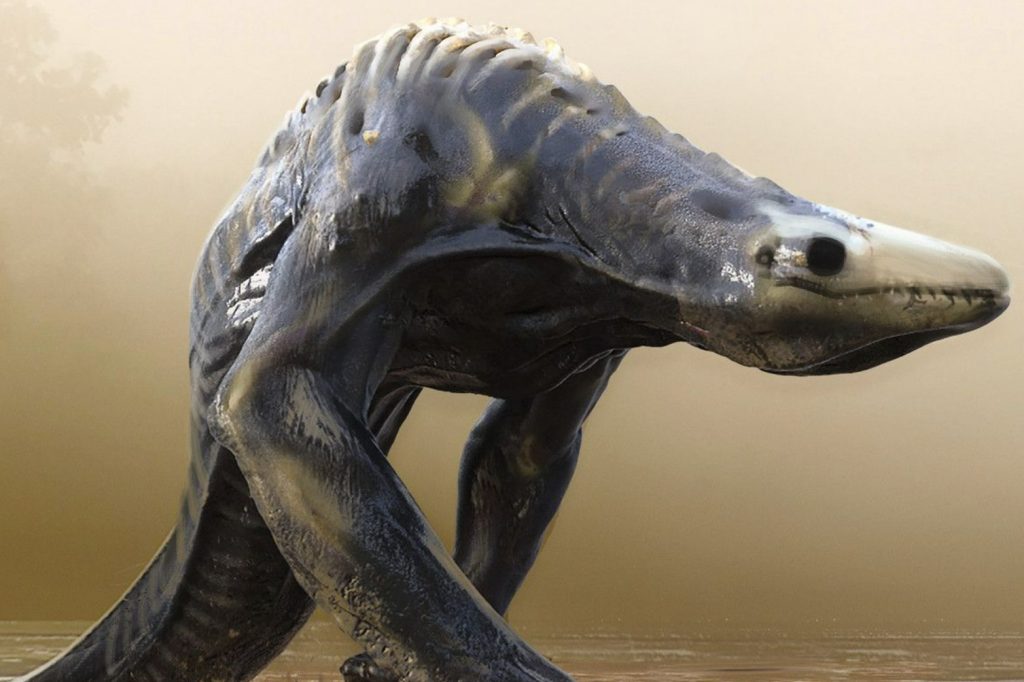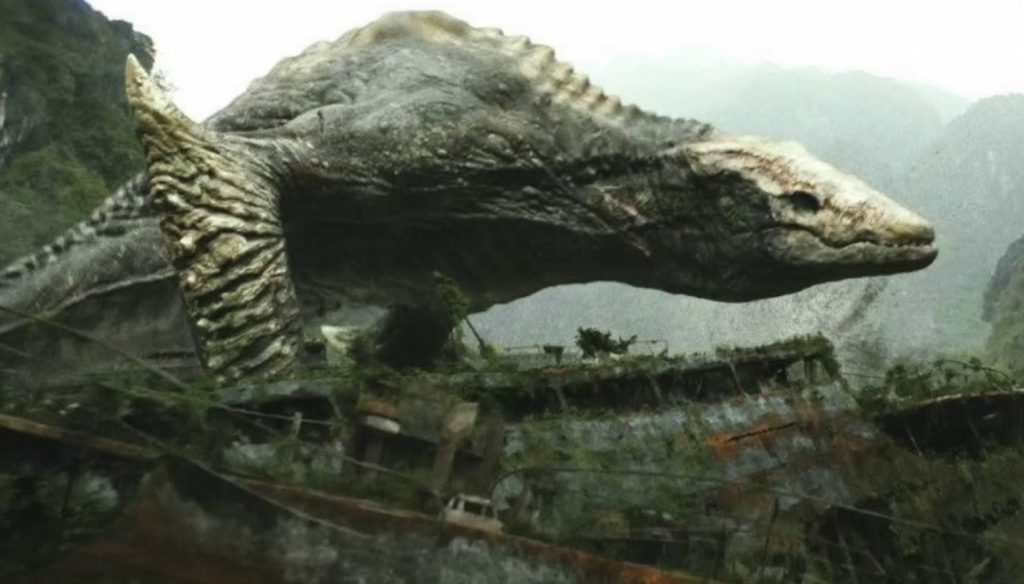Deep within the uncharted caverns of the Hollow Earth lurks a monstrous predator – the Skull Crawler. These terrifying creatures, captivating audiences with their bone-chilling appearance and savage behavior, play a crucial role in the delicate ecosystem of this subterranean world. Unveiling the anatomy, behavior, and potential origins of the Skull Crawler allows us to appreciate the complexities of this fascinating – and frightening – inhabitant of the Hollow Earth.
Part 1: Built for Battle: The Anatomy of a Skull Crawler

Armored for the Depths: A Bony Carapace for Defense and Digging:
The Skull Crawler’s formidable build is characterized by its thick, bony carapace, which serves dual essential functions. Primarily, this robust armor acts as the creature’s primary defense, particularly safeguarding its head and neck from potential attacks by other kaiju, thereby fortifying its resilience in confrontations and contributing to its survival. Moreover, this sturdy carapace proves advantageous as it enables the Skull Crawler to burrow effortlessly through the dense rock terrain of the Hollow Earth, allowing for seamless navigation and access to various subterranean areas. Beyond defense and burrowing, the bony carapace also provides crucial structural support for the Skull Crawler’s immense size, enhancing its physical stability and ability to maneuver within its environment. Overall, the multifaceted role of the Skull Crawler’s bony carapace accentuates its adaptability, defensive prowess, and capacity to thrive within the challenging subterranean landscape of the Hollow Earth.
More Than Just Jaws: A Multifaceted Arsenal of Terror:
The Skull Crawler’s most conspicuous feature is its colossal skull, adorned with razor-sharp teeth, showcasing its formidable offensive capabilities. However, its impressive arsenal extends beyond its menacing bite. Equipped with a long, prehensile tongue, the creature possesses the capability to ensnare and seize unsuspecting prey from a distance, adding an element of surprise to its hunting tactics. Furthermore, the Skull Crawler’s formidable and powerful claws, located on its limbs, serve dual purposes. These claws are adept for scaling and navigating treacherous cave walls, enabling the creature to traverse its subterranean habitat with agility. Additionally, these claws are formidable tools for tearing through flesh, underscoring the Skull Crawler’s ferocity in close combat. The combination of its imposing skull, versatile tongue, and powerful claws cements the Skull Crawler’s status as a formidable and adaptable predator within the tangled and perilous underground domain of the Hollow Earth.

Part 2: A Primal Predator in the Darkness: The Skull Crawler’s Behavior
Insatiable Hunger: Driven by a Devouring Instinct:
Skull Crawlers are classified as “hypervores” – creatures driven by an insatiable appetite that dictates their every action. These relentless hunters are equipped with an acute sense of smell, enabling them to track prey over vast distances within the intricate tunnels of the Hollow Earth. Their primary targets are other kaiju residing within the Hollow Earth, but they are not above consuming smaller creatures or scavenging carrion to satisfy their bottomless hunger. The hypervore classification underscores the all-consuming nature of the Skull Crawlers’ appetite, emphasizing the driving force behind their relentless pursuit of sustenance and their unyielding determination to secure their next meal. This insatiable hunger fuels their actions and behavior, shaping their role as formidable and relentless predators within the unique and challenging environment of the Hollow Earth.
Solitary or Cooperative? A Flexible Predatory Strategy:
While typically solitary hunters, Skull Crawlers have displayed a surprising level of cooperation when faced with overwhelming prey. Multiple Skull Crawlers have been observed working together to take down larger kaiju, strategizing attacks and utilizing their individual strengths to overwhelm their target. This suggests a level of intelligence beyond mere instinct, potentially driven by a complex social hierarchy within the Skull Crawler population.

Part 3: Unearthing the Mystery: Theories on the Skull Crawler’s Origins
Born of the Earth: Evolved for Life in the Depths:
Skull Crawlers exhibit remarkable adaptations that seem tailor-made for their subterranean lifestyle. Their robust carapace not only provides protection but also enables them to effortlessly tunnel through the dense rock of the Hollow Earth, granting them unparalleled mobility within their environment. Furthermore, their acute sense of smell plays a critical role in their survival, allowing them to skillfully navigate the convoluted and intricate networks of tunnels that characterize the subterranean realm. Evolutionary theories propose that Skull Crawlers may have originated from smaller, burrowing ancestors that gradually acclimatized to the harsh subterranean conditions, eventually growing into the colossal, apex predators they are now. This evolutionary journey underscores the remarkable adaptability and resilience of the Skull Crawlers, shedding light on their extraordinary capacity to thrive in the challenging and complex underworld of the Hollow Earth.
Echoes of the Surface World:
A Connection to the Island Above? The presence of Skull Crawlers in the Hollow Earth raises intriguing questions about a potential connection to the surface world. Legends on Skull Island, a mysterious island rumored to be the entrance to the Hollow Earth, speak of giant, skull-faced creatures. This suggests a possible shared origin between the Skull Crawlers of the Hollow Earth and the monstrous inhabitants of Skull Island, hinting at a deeper link between the two worlds.

Part 4: A Force of Nature: The Skull Crawler’s Role in the Hollow Earth
Disrupting the Balance: A Threat to the Hollow Earth Ecosystem:
The menacing presence of Skull Crawlers presents a substantial threat to the fragile equilibrium of the Hollow Earth ecosystem. Their insatiable appetite and destructive nature have the potential to disrupt the natural predator-prey relationships, leading to food scarcity and intense resource competition among various kaiju species. If left uncontrolled, Skull Crawler populations could wreak havoc, devastating entire subterranean biomes and impacting the interconnected web of life within the Hollow Earth. Their relentless foraging and predatory behavior may upset the delicate balance of the ecosystem, creating ripple effects that could significantly alter the dynamics and survival strategies of the indigenous creatures. Consequently, the critical role of managing and stabilizing Skull Crawler populations becomes imperative in safeguarding the ecological integrity of the Hollow Earth and preserving the diverse and intricate web of life within this unique subterranean realm.
A Glimpse into the Unknown: A Reminder of Hidden Worlds:
Despite the fear they inspire, Skull Crawlers also represent a fascinating anomaly in the Hollow Earth. Their existence raises questions about the true nature of our planet and the possibility of undiscovered ecosystems thriving beneath the surface. Studying Skull Crawlers can lead to advancements in our understanding of subterranean life forms, potentially revealing secrets about the origins and evolution of life on Earth.

The Skull Crawler is more than just a terrifying monster; it’s a captivating enigma that sheds light on the complex and fascinating world of the Hollow Earth. As we delve deeper into their anatomy, behavior, and potential origins, we gain a greater appreciation for the delicate balance within this subterranean realm.

